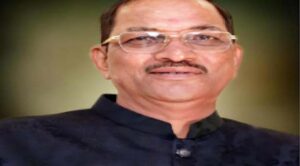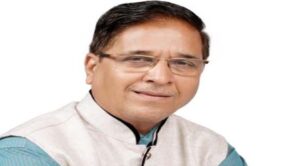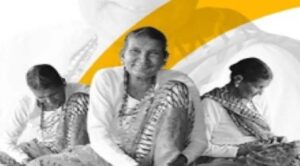
Rudi-Udi Jagar Gatha: Example of Masculinity/Manliness in Garhwali –Kumaoni folklore/ballad
रुदी -ऊदी जागर :भडौ , कटकू, भड़वळि या पांवड़ा
Folklore, Folk Legends, Folk Myths of Kumaon-Garhwal, Uttarkahnd-17
Bhishma Kukreti (Literature Historian )
There are the following types of Folklores or Jagar Gatha in Garhwali – Kumaoni folk literature-
1-Deity Folklore or Daivik Jagar Lok Gathayen
2-Pauranic Folklore or Pauranic Jagar Lok Gathayen
3- Bravery Folklore of Veer, Bhad Jagar Lok Gathayen (Masculine or Manliness and feminine or femaleness folklore)
4-Love Stories Folklore or Prem Parinay ke Jagar Lok Gathayen
Main features of Masculine or maleness Garhwali –Kumaoni Folklore or Ballads
The masculine or manliness of Garhwali and Kumaoni folklore are a fine blend of fairy tales, historical tales, short stories, beliefs, superstitions, and messages and with full opportunities for poetic vitality and dancing.
The Garhwali Kumaoni folklore masculine folklores incessantly provide a voice from its earliest periods to the entire region (Uttarakhand), telling about hopelessness and then providing a suitable path.
The Garhwali Kumaoni masculine/manliness folklores are rich in the poetic genre of the time when they were created.
The folklore creative used adjectives in such a way that the audience understands it in wholeness. Economic uses of phrases are enough for making the audience understand the whole matter.
While singing the singers repeat the poetry and create the remarkable effects of alliteration.
Kukreti details the dramatic structure found in Garhwali folk dramas and found that without knowing the knowledge of literature, folk literature creators were using every aspect of Natya Shastra literature in creating folk literature.
There is always a complete melody sense in Garhwali Kumaoni masculine/manliness folklore and are distinguished from other nearest regional (such as Bijnaur, Saharanpur, Himachal Pradesh, and Nepal) folklore melodies.
The masculine characters of Garhwali Kumaoni’s masculine /manliness folklore are brave and definitely act as supernatural creatures. However, there is a sense of real-life effects in these bravery subject folklore too. Usually, apart from supernatural acts, the brave men of Garhwali Kumaoni’s masculine/manliness folklores live the life of contemporary society.
Usually, it is seen that if the male is king or prince in Garhwali Kumaoni masculine/manliness folklore, the king had several wives (barring some exceptions).
The main male character of Garhwali Kumaoni’s masculine/manliness folklore are brave, have a sense of self-identity, care for family and society, respect women especially his mother, are protector, responsible, nurturing, spiritual, friendly, faithful, respectful, sensitive, trustful and a donor too.
It is also found that the main male character or hero besides the perfect worrier also knows magic or Boksa Vidya, etc in Garhwali Kumaoni masculine/manliness folklores.
Violence is also part of bravery-oriented Garhwali Kumaoni masculine/manliness folklore.
Rudi-Udi Jagar Gatha
Udi Sumayl Jagar is an example of the maleness or masculinity of Garhwali Kumaoni folklore. The folklore of Rudi and Udi is taken from Gadhu Sumyal. It is said that Rudi and Udi were in mid of fourteen century. Udi was the father of the bravest of braves Gadhu Sumyal. The folktale belongs to Lower Khimsari and Upper Khimsari near Rudrapur. Rudi and Udi had been Thokdar of Khimsari Riyasat.
A few lines of Rudi-Udi Jagar are as –
कुमाऊं और गढ़वाल की लोक गाथाएँ/जागर -17
रुदी -ऊदी जागर :भडौ , कटकू या पांवड़ा
(सन्दर्भ: शिव नारायण सिंह बिष्ट , गढ़ु सुम्याळ )
कति सौ वर्ष हुईन , रुद्रपुर मा रुदी रौत
तलि खिमसरी हाट, रंदावो उदी रौत
एक दिन उदी चली गय रुद्रपुर मांझ
देखे वैन दिदा चिंता मा पोडियूं
ब्वद दिदा क्या च बात केकी च खैरी ?
क्य बिपद प्वड़े दीदा ऱे त्वेकू आज
इनि क्या बात छ जो हमसे नि ह्वे सकदी
दिदा हुकुम दे दे क्य कैरी धू आज
कै दुश्मन को सर काटीक लऊँ
कै रजवाड़ा को आज सफाचट कैरि द्यूं
जुल्म की बात जो मेरा रंदा चिंता हू वा,
हमारी माल की दूण अणसधि रई गय
हमारी माल की रस्याल बंद जो होई गय
उदी न सुणीन बैन गुस्सा चढ़ी ग्य
हमारी मौजदी मा, दूण रय अणसाधी
धिक्कार छ हमकू, दूण जी नि साधी
दिदा जौंला दूण , लौला वींकू साधी
तली खिमसरीहाट आया उदी रौत
अपणी बोई मा बोल्द भड़ उदी रौत
दे दे आज्ञा हमकू, खुशी मन ह्वेका
जीति क औला दूण , दर्शन करला चरण का
इन बैन सूणी क , माता उंकी बोल दे
शाबाश बेटा मेरा , जावा दूण साध
Long back, Rudi Raut was Thokdar of upper Khimsari and Udi Raut was Thokdar of lower Khimsari near Rudrapur. One day, Udi Raut reached Rudrapur and found his cousin’s elder brother Rudi worried.
Udi said,’ Brother! What is the matter that we can’t finish? You order me I shall put the beheaded head of our enemy at your feet. Whoever, kingdom you tell, I shall destroy it. Till my death, you should not worry.”
Rudi answered,” We are not successful to command Dun of Mal (Valley of Plains/Bhabhar) and nobody sends tax from there. We should correct the situation there.”
Listening, to the answer, Udi became very angry. Udi said,” Let us go to Dun of Mal and correct the situation”.
Udi came to his place Khimsari and told the whole story about the wrong happenings in Dun Mal (plain valley). Udi asked the blessing of his mother for correcting the situation in Dun Mal.
His mother said,” If you are really my son if you were the real son of bravest of braves, you will defeat the enemies. The real dharma of Khsatriya is to win the battle.”
After getting a blessing from their mother, both the brothers started their journey on Raghuvanshi horses for Dun mal.
After reaching Doon, Mall, both worriers cut the heads of enemies as a human cuts banana trees. There was bloodshed in Dun Mal. Both the brave men won the enemies and people paid taxes in the forms of wheat, cereals, ghee, milk, and jewels. They sent the tax to Rudripur through transporters and messengers.
The two brothers corrected the administration and started the journey back to Khimsari. On the way, Rudi became greedy and he asked to Udi come slow while he would be going with messengers. Rudi ordered messengers to take all taxes to upper Khimsari.
Then Rudi stopped and waited for Udi. When Udi reached, Rudi said,” I divided the taxes into two parts and dispatched to Upper Khimsari and Lower Khimsari.”
On the way, both the brothers rested at Gharat/Panchakki (grinding mill run by water). Udi was tired and he slept. Sinful Rudi killed sleeping Udi by throwing a grinder of Gharat.
He reached to lower Khimsari and started weeping before his aunt (mother of Udi) and said,” We corrected the dun Mal but enemies killed Udi by deceptive methods. Now I am helpless without my brave brother”
The mother of Udi became sad and fell down on the ground. The wife of Udi became sad and fell to the ground. The wife of Udi wanted to burn her but being pregnant she did not perform sati (to burn herself).
Rudi said,” I shall take revenge for my brother’s death.” Rudi returned to his house.
After the death of Udi, the Udi family became poor.
However, the wife of Udi Kunjavati delivered a male child. The astrologer named the child Gadhu Sumyal. When Gadhu Sumyal became young he came to know the story of his father’s death.
Read the Story of Gadh Sumyal killing Rudi in the next episode….



